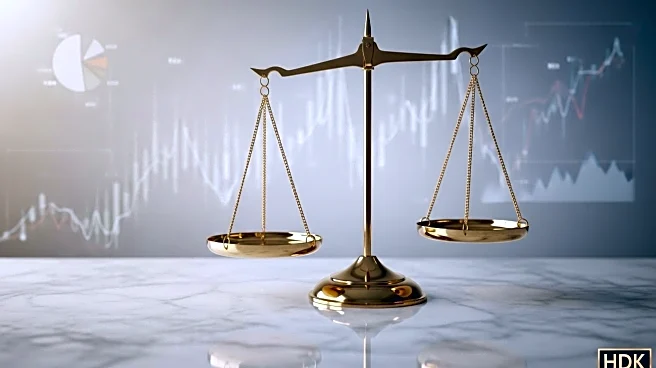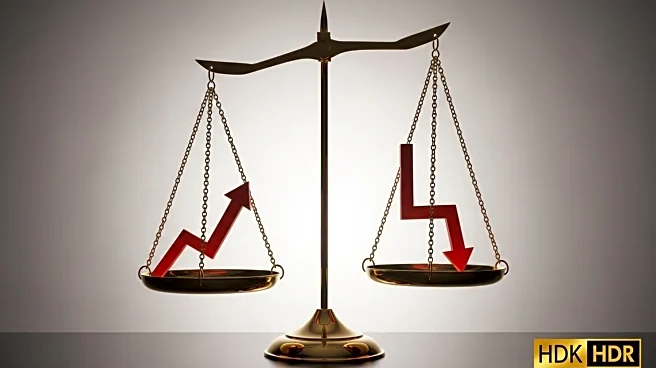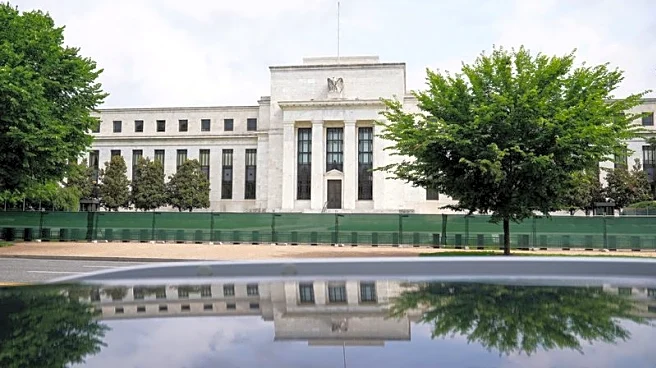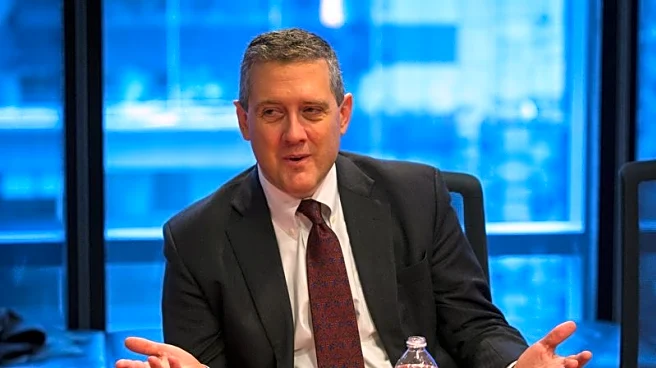What's Happening?
The U.S. Federal Reserve has reduced interest rates for the first time since December, aiming to stabilize the labor market amidst rising inflation driven by President Trump's tariffs. The rate cut brings interest rates to a range of 4 to 4.25 percent, the lowest since November 2022. Fed Chair Jerome Powell highlighted the slowdown in job gains and increased risks to unemployment, while acknowledging the inflationary pressures from tariffs. The decision comes amid political tensions, with President Trump criticizing the Fed for not cutting rates more significantly and attempting to remove Fed officials.
Why It's Important?
The rate cut reflects the Fed's shift in focus from inflation to employment, as hiring has slowed significantly. Lower interest rates could stimulate borrowing and economic growth, but may also exacerbate inflation, which is already above the Fed's target. The tariffs have contributed to rising prices, with inflation reaching 2.9 percent in August. Economists are concerned about the potential for stagflation, where both unemployment and inflation rise simultaneously. The Fed's actions are crucial in managing these economic challenges and maintaining stability.
What's Next?
The Fed will continue to monitor the labor market and inflation, assessing the impact of tariffs and other economic policies. The political pressure from President Trump may influence future decisions, as he has been vocal about his dissatisfaction with the Fed's actions. The ongoing legal battles over Fed appointments could also affect the central bank's operations and decision-making processes.











